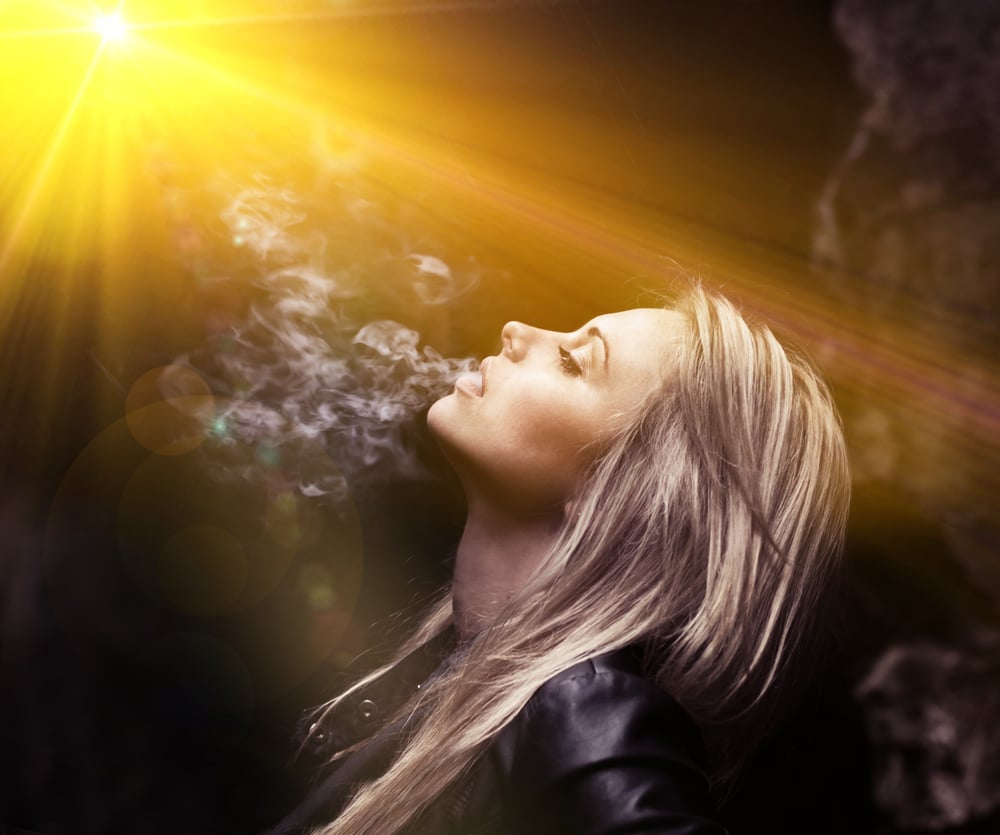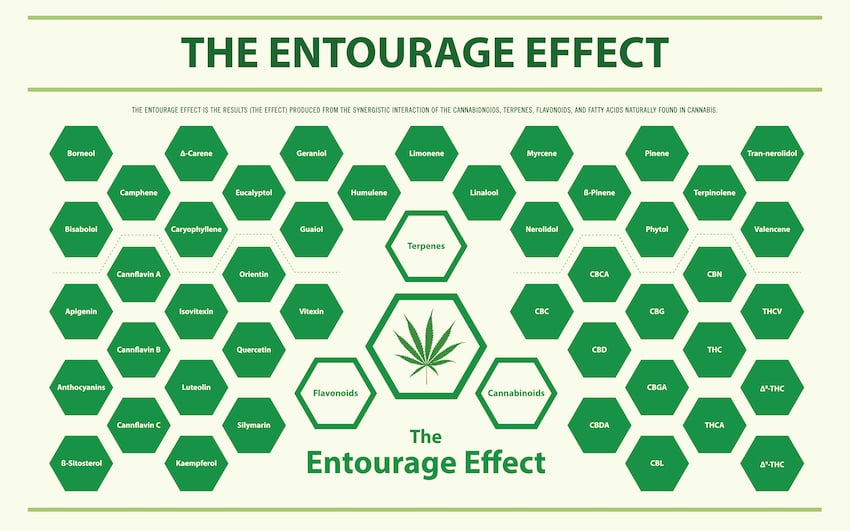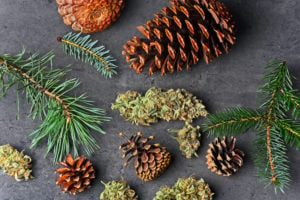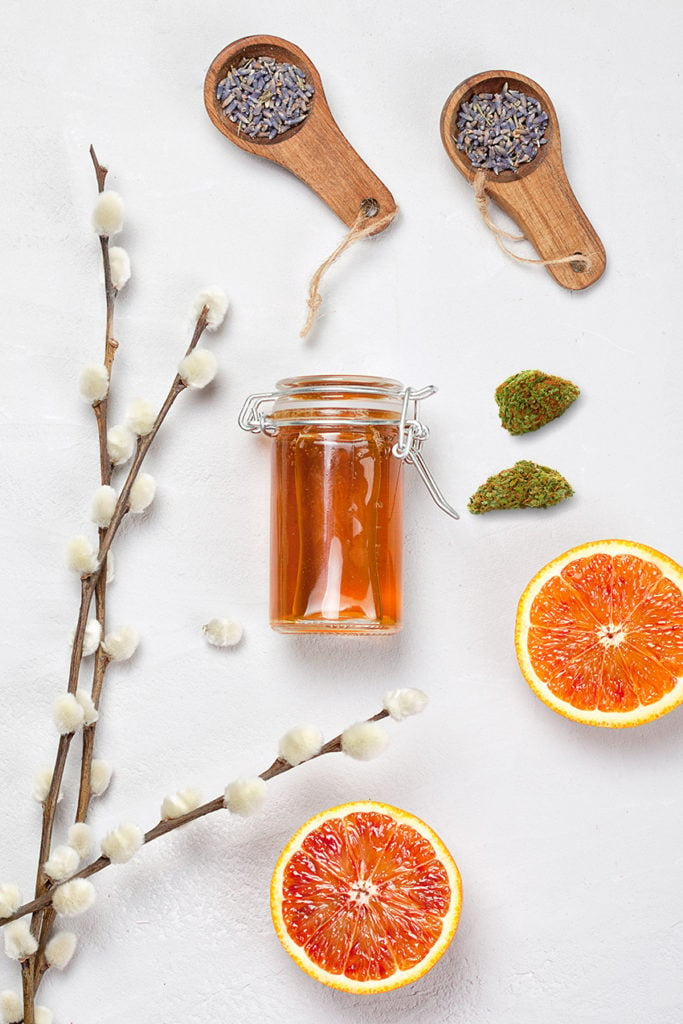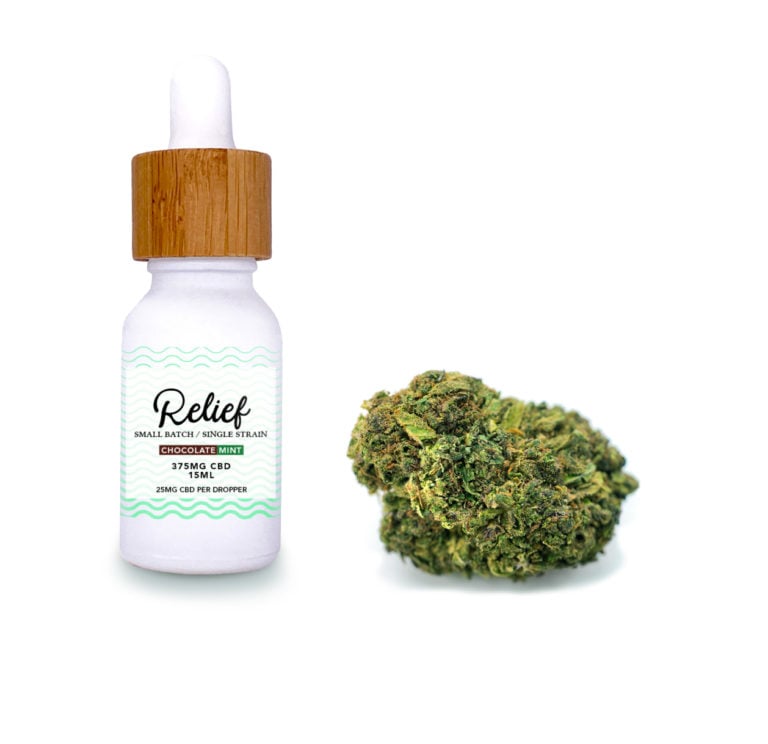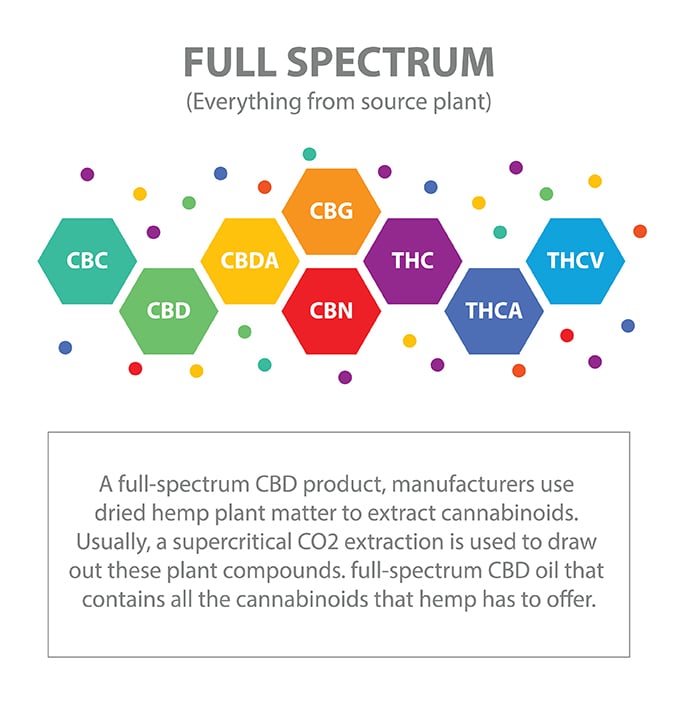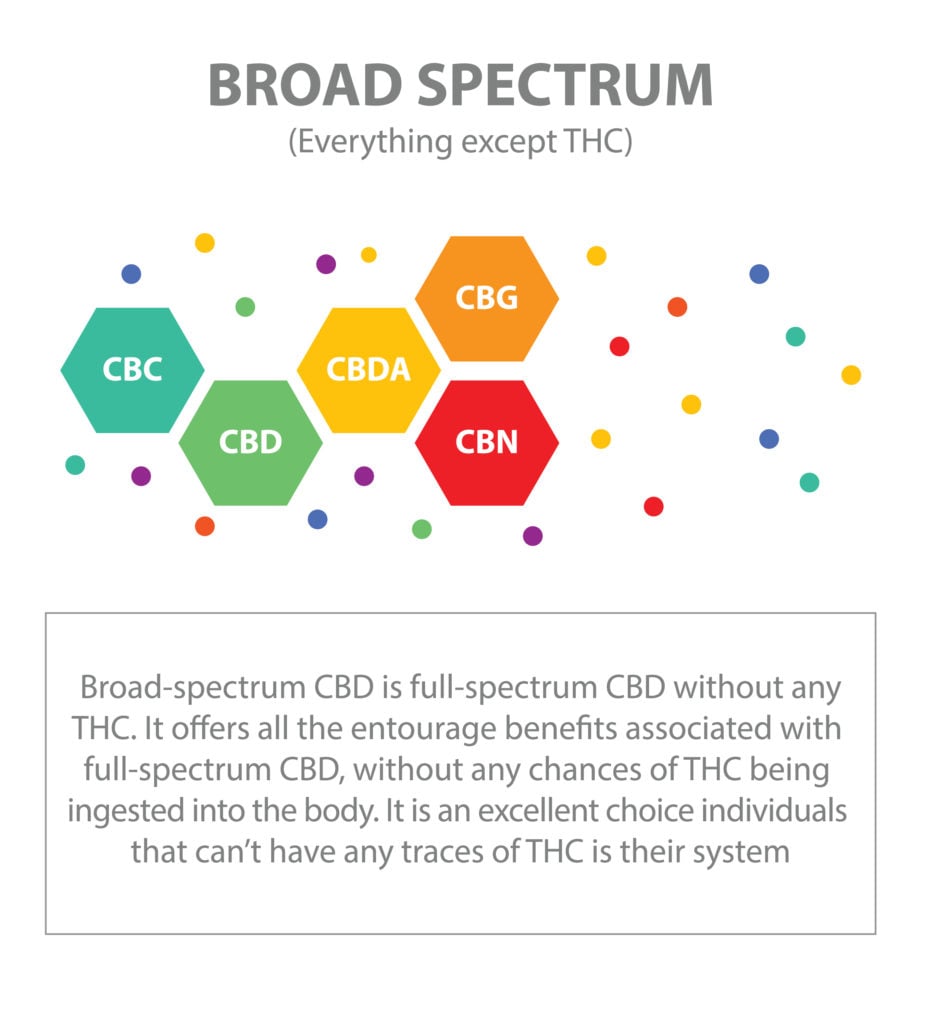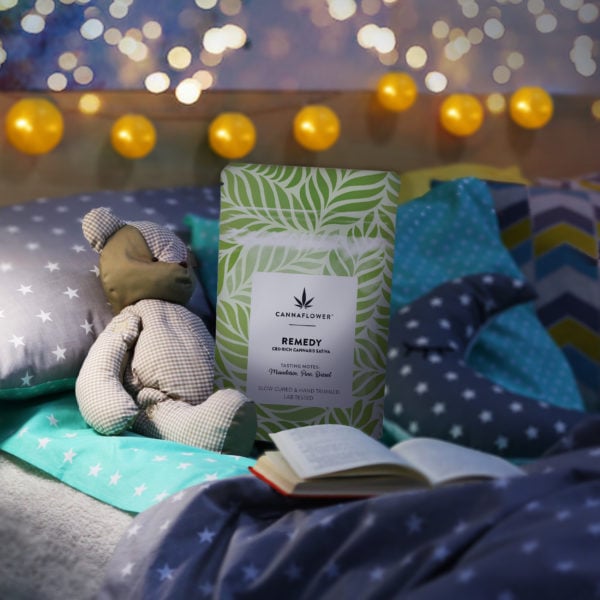Whether you’re a veteran hemp flower smoker or just getting acquainted with CBD, odds are you’ve encountered the phrase “entourage effect.” Indeed, one reason many people start smoking hemp is to take advantage of this unique phenomenon.
So, what the heck does “entourage effect” mean, and why should you care? In brief: the entourage effect is the theory that CBD works best when paired with other natural hemp compounds. Although research is ongoing, there are already a few studies suggesting the entourage effect could alter a smoker’s CBD experience.
If you’re interested in learning more about this novel phenomenon, then be sure to keep reading. Below, we’ll go over what the most up-to-date research has to say about the entourage effect.
The Entourage Effect Explained
Like any plant, cannabis contains many different chemical components. Undoubtedly, the most intriguing compounds in cannabis are known as “cannabinoids.” These incredible chemicals interact with cannabinoid receptors in our body like no other compounds on earth.
The two most well-known cannabinoids in the cannabis family are THC (Tetrahydrocannabinol) and CBD (Cannabidiol). However, there are many other, lesser-known cannabinoids produced by the hemp plant.
The variety of compounds found in hemp seem to interact in various ways. Indeed, there’s a growing body of evidence that suggests cannabinoids could promote each other’s strengths in complex ways. How these different compounds combine and work together to produce differing effects is what has come to be known as “the entourage effect.”
What is the Entourage Effect?
Put simply, the “entourage effect” is the idea that all-natural hemp compounds work best when taken together. Supporters of this theory believe the various cannabinoids in any hemp strain have a natural “synergy.” When a person takes hemp in its original form, these cannabinoids seem to play off each other to produce a heightened effect.
Although research into this issue is still in its infancy, a few studies suggested whole-plant extracts are more potent than CBD isolate. So, while CBD might work independently, research now suggests it could work better when paired with other hemp compounds.
These findings have led some cannabis activists to support the idea that whole-plant medicine is the way of the future. Rather than putting time, energy, and money into single cannabinoid extraction, entourage effect activists believe in maximizing cannabinoid counts in various cannabis strains.
According to entourage effect supporters, the cannabis industry should focus more on promoting artisan cannabis strains rather than extraction facilities. Giving patients trichome-rich hemp buds or full-spectrum CBD oils could potentially have a greater therapeutic impact.
How Do Cannabinoids and Terpenes Work Together?
To better understand the entourage effect, it’s essential to recognize the diversity of compounds in the cannabis plant. While Tetrahydrocannabinol (THC) and Cannabidiol (CBD) get a lot of media fanfare, countless other molecules play a role in this plant’s composition.
For example, there are dozens of lesser-known cannabinoids often called “secondary cannabinoids.” A few of these novel cannabinoids that researchers have identified include Cannabigerol (CBG), Cannabinol (CBN), and Cannabichromene (CBC). Again, we don’t know a ton about these cannabinoids, but it appears they all have therapeutic potential. Scientists also believe these various cannabinoids could work together with one another.
In fact, we now know CBG exists in all cannabis plants as the predecessor for both THC and CBD. Cannabigerolic acid (known as CBGA) is developed by the cannabis plant before being converted to either cannabidiolic acid (CBDA: the acid that forms CBD) or tetrahydrocannabinolic acid (THCA: the acid that forms THC).
Unlike their cousin THC, CBG and CBD don’t have psychoactive side effects. While there is already a booming industry for CBD cultivation, a niche industry for CBG hemp strains is already gaining traction. Because CBG cultivars contain next to zero THC, CBG consumers are more likely to avoid any adverse psychological side effects.
Cultivating CBG is a very complicated process that involves interrupting the natural growth of the cannabis plant. For a more detailed explanation of CBG cultivation and characteristics, I recommend reading Cannaflower’s White CBG Strain Review.
Sadly, the research into how cannabinoids like CBG and CBD interact is still in its infancy. Despite this dearth of evidence, however, many hemp flower connoisseurs are happily trying all sorts of different strains, recording their experiences, and sharing their observations. According to many of these enthusiastic hemp smokers, the entourage effect is a real phenomenon worthy of scientific study.
Inspired by this interest in whole-plant hemp, acclaimed cannabis researcher Dr. Ethan Russo ran a series of tests on the entourage effect. In his published review Taming THC, Dr. Russo suggests some cannabinoids might interact with aromatic compounds known as terpenes. Some potential interactions put forward in Taming THC include combining limonene and CBD for anxiety or CBD and beta-caryophyllene for addiction.
Since terpenes seem to play a critical role in influencing the entourage effect, it only makes sense to take an in-depth look into what these smelly chemicals are.
What are Terpenes?
Along with cannabinoids, terpenes are some of the most influential compounds in the cannabis plant. Interestingly, it’s terpenes that give various plants, herbs, and fruits their distinctive aromatics. When you notice one strain smells more like “pine” and another has hints of “citrus,” you’re literally comparing different terpene profiles.
Researchers still don’t know how many terpenes are in the cannabis kingdom, but a fair estimate is in the hundreds. It’s now believed the cannabis plant evolved these terpenes as a natural defense against predators and as “bait” for pollinating bugs.
The same glands that produce cannabinoids produce terpenes, but terpenes are not unique to the cannabis plant. Indeed, many different plants, fruits, and spices share the same terpenes.
For example, the cannabis terpene alpha-pinene is found in great abundance in pine trees. Unsurprisingly, cannabis strains with elevated levels of pinene tend to have a “woodsy” aroma similar to a fresh forest.
Conveniently for us non-specialists, many terpene names provide a clue for their associated flavor. As already mentioned, alpha-pinene is closely associated with the pine tree. Another example would be limonene, which has a strong association with citrus fruits.
Although terpenes play a primary role in influencing a strain’s flavor, Dr. Russo’s studies suggest these compounds also have physiological effects. For instance, the spicy terpene beta-caryophyllene shows tremendous potential as an anti-anxiety agent. There are also a few studies suggesting the mango-like terpene myrcene might make users sleepy.
Like with cannabinoids, we still have a long way to go before fully understanding how terpenes promote the “entourage effect.” However, these preliminary findings strongly suggest these aromatic compounds could profoundly affect how hemp strains affect our body.
Is the Entourage Effect “Real?”
On a chemical level, there is little doubt that ingesting whole plant cannabis has different potentially therapeutic effects than ingesting single molecule CBD. As to the precise effects that are happening to the endocannabinoid system (ECS), this is still very much a “new frontier.” Most of the differences between whole plant and single molecule treatments remain unknown.
However, studies have been done on the entourage effect’s efficacy on pain management. A study in the February 2010 edition of the Journal of Pain and Symptom Management examined the effects of a THC extract and a THC-CBD extract on cancer patients. Interestingly, cancer patients that received the THC-CBD combo reported more significant pain relief.
While findings like these are encouraging, the best “data” we have on the entourage effect comes from customers who report profound effects after smoking hemp flowers. Granted, this is all anecdotal evidence, but it’s rare for a cannabis consumer to say every hemp strain has the “same effect.” If the qualities and effects of various hemp strains differ, this must be due to changes at the molecular level; in other words, different content and combinations of cannabinoids and terpenes.
What Does The Entourage Effect Feel Like?
Remember, the entourage effect does not refer to a particular experience. Rather, this theory states the hemp flower has a higher potency when consumed in its raw form. Different hemp strains could have very different effects depending on their cannabinoid and terpene counts.
For instance, the entourage effect in a strain like Bubba Kush might make users feel sleepy, cozy, and at peace.
By contrast, the entourage effect of Sour Space Candy might make people feel lighthearted and giggly.
Just because all hemp strains might have an “entourage effect” doesn’t mean they all have the same effect. The best way to figure out how a strain will react with your body is to look into the terpene and cannabinoid levels.
Users typically describe Bubba Kush as having a slightly sweet and woodsy aroma thanks to traces of myrcene and alpha-pinene. You might also notice a hint of citrus flavor from the terpene limonene. Definitely pick up this dessert strain if you want a complex terpene profile with reliably potent indica effects.
Is The Entourage Effect The Same Thing as Being “High”?
The short answer to this question is “no.” The entourage effect occurs in both marijuana strains (cannabis plants with THC over 0.3 percent) as well as in CBG or CBD hemp strains.
However, it’s only high-THC strains that will, well, get you “high.” THC is the only cannabinoid that’s currently associated with strong psychoactive effects. So, while the “entourage effect” could refer to this psychoactive sensation, that doesn’t mean every cannabis strain will make you “high.”
Indeed, low-THC hemp strains like Remedy often make people feel “relaxed” and “at ease” without psychoactive side effects. While both Remedy and high-THC strains have the “entourage effect,” only the THC strains will make users feel “stoned.”
How Do I Get the Entourage Effect?
Now that you know a bit more about the entourage effect, you’re probably wondering how you could incorporate this phenomenon into your CBD routine. Here are a few helpful hints about maximizing the entourage effect’s benefits.
Use Hemp Buds Instead of Extracts
Smoking well-cured hemp buds is an ideal way to take advantage of the entourage effect. Indeed, some users say this is the most immediate way to experience all of hemp’s benefits.
In addition to ingesting all those additional hemp molecules, smokable hemp travels directly into your bloodstream. This means you should feel the full effects of your strain within a few minutes.
Each of Cannaflower’s CBD Hemp Flower Strains allows customers to experience an entourage effect unique to that particular cultivar. Be sure to look through our full catalog to find the right strain for your preferences.
Use Full-Spectrum CBD Extracts
If you’re not into smokable hemp buds, no worries! You could also take advantage of the entourage effect with certain CBD oils. Indeed, the only CBD extract that won’t have any entourage effect would be an ultra-purified, single-ingredient formula.
For the best results, search for a “full-spectrum hemp oil.” However, products listed as “broad-spectrum” or “distillate” might also offer some benefit. Whatever you do, please avoid CBD isolate products if you’re most interested in taking advantage of the entourage effect.
What is a full-spectrum extract?
A cannabis extract can refer to several different processed CBD products. The most common full-spectrum extract is CBD oil, but cannabis is also processed into cartridges for vaporizers, dabs, and pills.
As long as a cannabis product states that it is “full-spectrum,” this means there was no attempt made to isolate a single molecule like CBD. In addition to secondary cannabinoids, these products also contain a wealth of terpenes and antioxidants.
It’s also essential to note full-spectrum oils could contain traces of THC. To be considered federally-legal, these CBD oils must have no more than 0.3 percent THC, so always look for lab verification before buying your product.
What is a broad-spectrum extract?
The most significant difference between full-spectrum CBD and broad-spectrum CBD has to do with THC.
While full-spectrum goods could have 0.3 percent THC, broad-spectrum extracts cannot.
Other than that, broad-spectrum will have a host of beneficial secondary cannabinoids, flavonoids, and terpenes.
What is an isolate extract?
When an extract contains only one compound, it’s known as an “isolate extract.” Since these products only have one compound, you will not experience the entourage effect.
In the past few years, more interest has been paid to isolating cannabis compounds like CBD. However, as interest in the entourage effect picks up steam, there’s a growing demand for full-spectrum goods. As we learn more about how the “entourage effect” works, it’s possible isolate products will become less prominent in the cannabis industry.
Try The Entourage Effect For Yourself!
The “entourage effect” is undoubtedly one of the most exciting fields in contemporary cannabis research. Although we still don’t have all the answers, that doesn’t mean customers can’t experiment with this phenomenon. Indeed, as long as you’re using well-cured hemp buds or a full-spectrum oil, then you are experiencing the “entourage effect.” See for yourself whether this phenomenon increases the potency of your CBD experience.
Explore Our Menu!
The world’s best CBD hemp flower straight to your door.
External Links:
https://www.projectcbd.org/science/pure-cbd-better
Study by Dr. Ethan Russo: https://bpspubs.onlinelibrary.wiley.com/doi/pdf/10.1111/j.1476-5381.2011.01238.x
Multicenter, Double-Blind, Randomized, Placebo-Controlled, Parallel-Group Study of the
Efficacy, Safety, and Tolerability of THC: CBD Extract and THC Extract in Patients with Intractable Cancer-Related Pain http://files.iowamedicalmarijuana.org/petition/2012/Johnson_2010.pdf
Beta-caryophyllene anti-anxiety study: https://pubmed.ncbi.nlm.nih.gov/24930711/
Myrcene sedative potential study: https://pubmed.ncbi.nlm.nih.gov/12587690/


